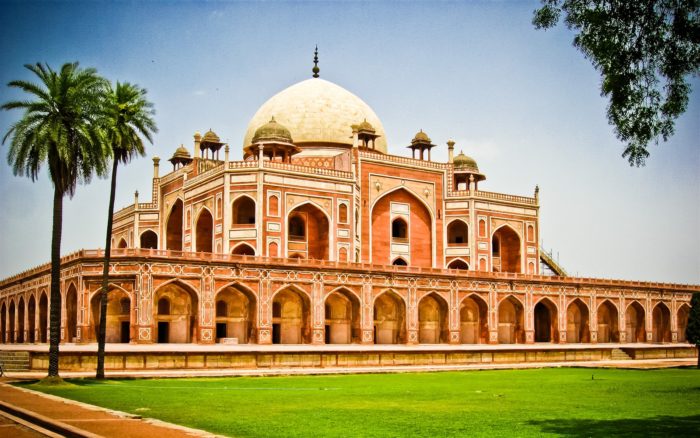Humayun Tomb, Significance of Culture
Humayun Tomb
Humayun tomb is one of the famous Mughal Architecture in India. It was built in 1570 AD, also a mausoleum for Mughal Emperor Humayun. The Tomb was the first garden-based construction in India. Hence, it has cultural significance; surprisingly, the architecture of the Tomb is very similar to the Taj Mahal, the world’s seventh wonder. The constructors used Red and white sandstone to bring the spectators a magnificent look. Hamida Banu Begum, the wife of Humayun, erected and spared 1.5 million rupees for the construction in those days. The historians believed that Hamida Banu only designed the Humayun tomb and gave suggestions to the Chief Architect.

Humayun Tomb History:
Humayun was the second emperor of the Mughal Empire eldest son of Babur. He ruled Mughal Empire for ten years with benevolent thoughts. He didn’t concentrate on expanding the Empire. However, the famous Afghan ruler Sher Shah Suri defeated Humayun and expelled him from India to Afghanistan. Then Humayun fled to the court of the Safavid Ruler, the Afghanistan ruler and asked for his assistance to regain the abanded kingdom. As a friend, Safavid Ruler helped Humayun to regain Delhi in 1555 AD. Again he didn’t rule for a long time. Unfortunately, he fell from the stairs of the Sher Mandal Library and died. Then his wife, Hamida Banu Begum, asked her choristers to build a magnificent tomb to honour her husband.
Due to her thoughts, Humayun’s tomb construction started in 1562 AD and took eight years to complete. The famous architect Sayyed Muhammad and his father Mirak Ghiyathuddin, who belonged to Herat City, planned the construction style and played the chief constructors of Historical construction.
Humayun Tomb Architecture:
The Tomb greatly impacted the later Mughal Rulers; in later years, the Emperors constructed many mausoleums in India and Pakistan. The Tomb is similar to Bibi Khan and Timur, which are at Samarkand. According to Islam, paradise is always in the middle of the garden with water flowing through it. So there, a beautiful garden was brought up around the Humayun Tomb.
The garden is arranged geometrically, and we can see some similarities between Tam Mahal and Humayun Tomb’s gardens. The park is divided into four and filled with a grid of water channels and paths. The gardens are the Persian garden styles, and the visitors can amuse themselves by looking at them. Later, the park was gradually filled with the tombs of Mughal descendants. Some Mughal emperors were also buried in the Mausoleum. In India or elsewhere, we can’t see such a high number of graves in one place. The Humayun tomb stands on a massive 7-meter platform and uses red sandstone for the construction and black and yellow marble used to the Tomb itself. The height of the Humayun’s Tomb is nearly 47 meters, and the width is 91 meters.
World Heritage Site Humayun Tomb
Now the Archaeological Survey of India looks after the Tomb under their ownership. This is the first Mughal architecture in India with high arches and double domes. Humayun’s Tomb also inspired the design of the Taj Mahal. It is one of UNESCO’s World Heritage Sites.